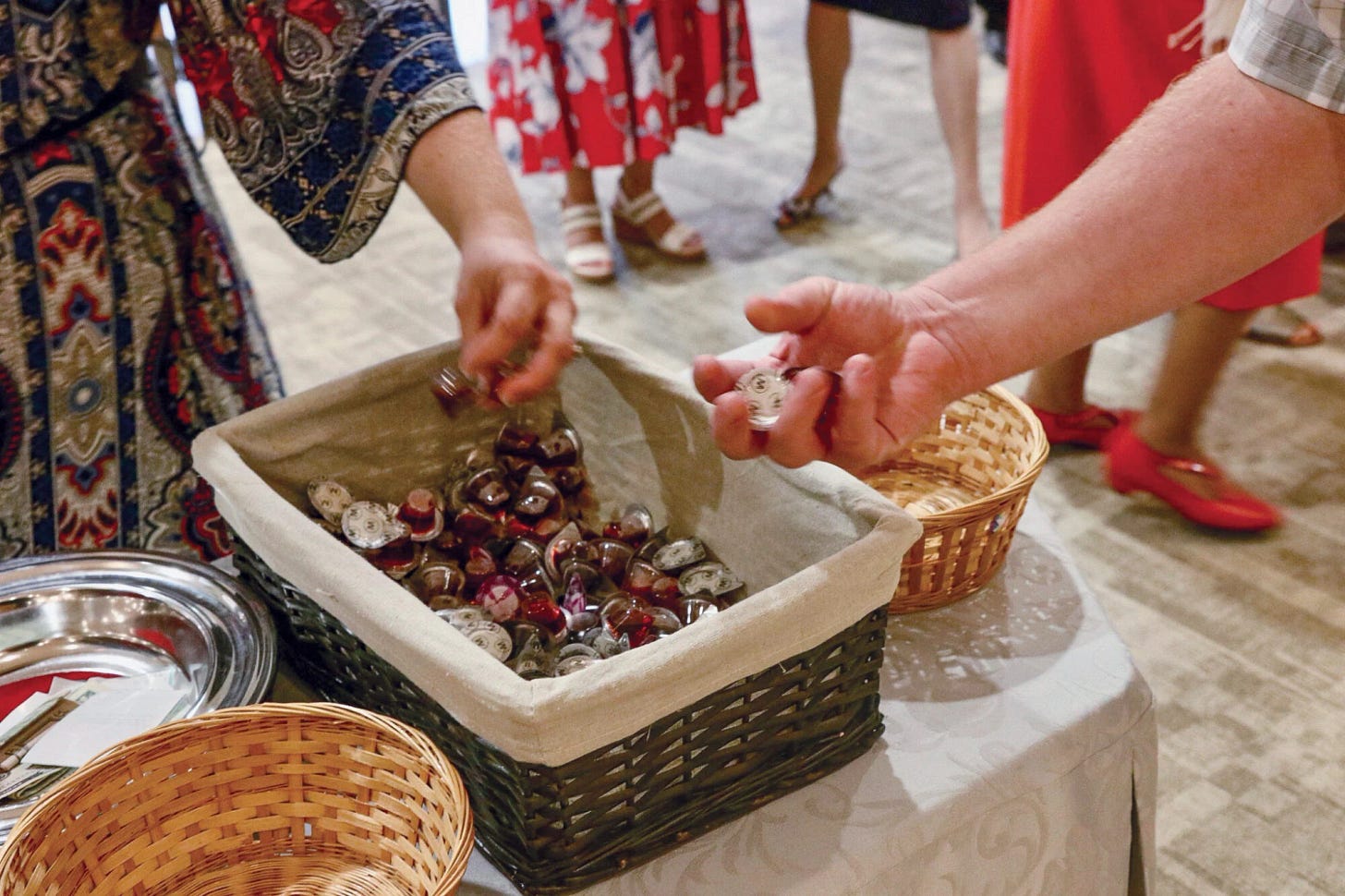FORT WORTH, TEXAS — I worshiped Sunday with the Northwest Church of Christ, my parents’ home congregation.
The original crew of five — my father, Bob; my mother, Judy; my brother, Scott; and my sister, Christy — celebrated Mom’s 78th birthday with a Tex-Mex lunch afterward.
I reflected earlier this year on the closing of the Greenwood Church of Christ, a rural North Texas congregation where Dad preached for nearly 23 years. My parents placed membership at Northwest after Greenwood’s final service.

“It was a blessing to have you all with us!” Robert Dotson, Northwest’s preaching minister, said in a Facebook comment Sunday afternoon. “You have a wonderful mother, and father, whom we love dearly at Northwest.”
“Thank you!” I replied. “We love you for loving them.”
In today’s newsletter, we focus on the Lord’s Supper. We’d love to hear about your communion experience.
Please email us at letters@christianchronicle.org, and be sure to include your home city, state (or country) and congregation in case we decide to quote you.
Editorial: Sharing the body and blood of Jesus
By Jeremie Beller | Opinions Editor
There is a sad irony in fighting over the Lord’s Supper.
“On the night he was betrayed,” Paul reminded the church in Corinth, “Jesus took bread … took the cup” (1 Corinthians 11:23-25). At that first communion, Jesus told his disciples the bread was his body “broken for you,” and the cup was the “new covenant in my blood.” Sharing the bread and cup with his disciples, he asked them to “do this in remembrance of me” (11:25).
If you grew up in church, your earliest memories likely include those words, etched into a wooden table. Each Sunday, familiar faces gathered to pray for the bread and the cup before passing them through the auditorium.
The table has played a central part in who we are even as we’ve wrestled questions of what it looks like. As churches began meeting outside of houses and more people gathered, communion adapted. Trays and plastic cups became common. Even pandemics influenced our practice at times. In our post-COVID world, “passing the trays” gave way to the convenience and sanitary use of “rip and sip” in many places.
While the table has been central to who we are, it has also triggered countless conflicts. We have divided over who can serve, who can take, when we take, how often we take, how many loaves and how many cups. Some of these differences are principled, and some of them are practical.
When The Christian Chronicle recently posted the story of a Virginia church rethinking how they share communion, lively conversation ensued. We take the table seriously!
Read the rest of the editorial.
Pass the trays? This congregation prefers gathering around the table
By Bobby Ross Jr. | Editor-in-Chief
ARLINGTON, VA. — It’s warm and personal.
It’s close-knit like a real family.
That’s how Ernestine Jones, 77, a longtime member of the Arlington Church of Christ, describes the Washington, D.C.-area congregation’s new approach to communion.
“You actually get to see the person right in front of you,” said Jones, a retired federal government worker.

Since the COVID-19 pandemic, the 85-year-old congregation — just across the Potomac River from the nation’s capital — has strived to make the Lord’s Supper more meaningful.
Church members no longer sit with heads bowed as they partake of the emblems.
In fact, the congregation — formed in the World War II era — removed entire rows of pews at the center of the auditorium. That modification made room for simple rectangular tables.
On a recent Sunday, nine gold communion trays rested atop purple tablecloths, providing a colorful backdrop for the commemoration of Jesus’ death, burial and resurrection.
From the archives, published in 2021
‘Rip and sip’ communion cups may be new normal
By Cheryl Mann Bacon | Contributing Editor
ABILENE, TEXAS — The practice of passing the Lord’s Supper in gold, silver or wooden trays became common among Churches of Christ and other Christian groups a little over 100 years ago.
The flu pandemic of the early 20th century led to a strong push for more hygienic practices, according to Doug Foster, scholar in residence and professor emeritus at Abilene Christian University.
Prior to the 1918 pandemic, “you had a silver pitcher and a chalice and passed that around. There’s some evidence where there were several cups but not individual cups,” the Restoration Movement scholar explained.

“The tray is just a tool to hold the individual cups,” he added, “and the individual cups came primarily during the great flu pandemic.”
A century later, as COVID-19 infections and deaths surged, churches again grappled with how to partake of communion while protecting members.
Many turned to the so-called “rip and sip” communion cups — a small wafer contained atop a tiny cup of grape juice.










